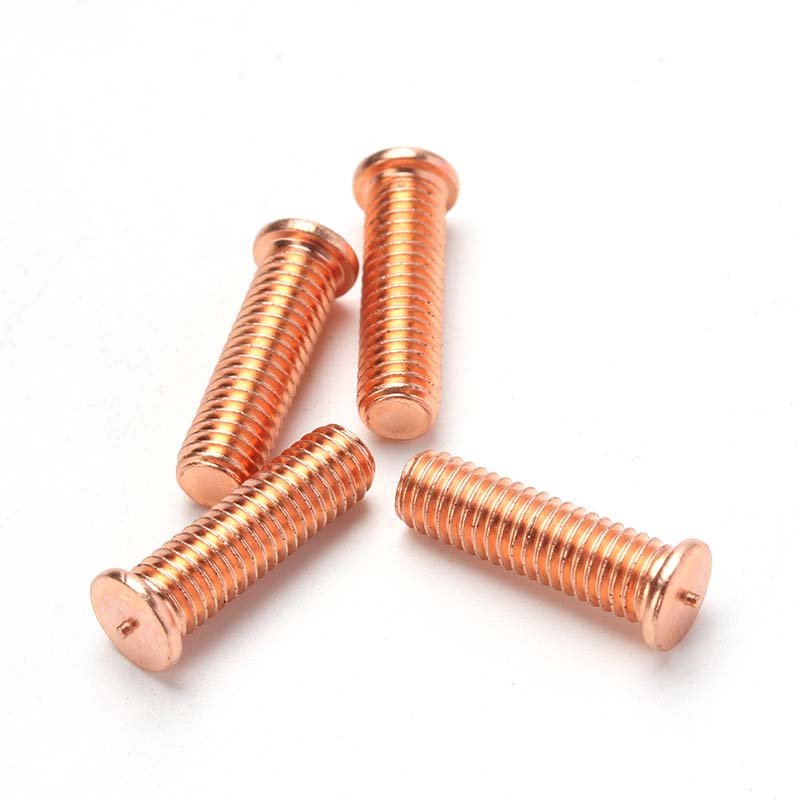Copper Plating Surface Treatments for Carbon Steel Fasteners
Copper Plating for Carbon Steel Fasteners
Copper plating is a widely used surface treatment process in the fastener industry, particularly for carbon steel fasteners. This method offers multiple benefits such as enhanced corrosion resistance, improved conductivity, and an aesthetically appealing finish. In this article, we will explore the copper plating process in detail, its benefits, drawbacks, applicability, performance features, and relevance in a wide range of industrial sectors.
Overview of Copper Plating Surface Treatment
Definition
Copper plating involves the electrochemical deposition of a thin layer of copper onto the surface of a metallic substrate, in this case, carbon steel. This process utilizes an electrolytic cell where the fastener acts as the cathode, and copper ions from the anode are deposited onto the fastener surface, forming a uniform metallic film.
Technical Background
Copper plating technologies have been in use since the early 20th century, initially in decorative and electronic applications. Over time, their adaptability and functional benefits transitioned them into the fastener industry. Today, copper plating is standard practice for providing electrical conductivity and moderate corrosion protection, especially useful for electronic hardware that requires reliable grounding and shielding.
Common Applications and Suitability
Suitable for Fastener Types
| Fastener Type | Suitability for Copper Plating |
|---|---|
| Bolts | High |
| Nuts | High |
| Self-tapping Screws | Medium |
| Washers | High |
| Rivets | Medium |
Common Application Industries
- Automotive
- Electronics and Telecommunication
- Aerospace
- Home Appliances
- Machinery and Equipment Manufacturing
Performance Characteristics of Copper-Plated Fasteners
| Performance Factor | Description |
|---|---|
| Corrosion Resistance | Offers moderate protection, suitable for indoor and dry environments. |
| Appearance | Smooth, reddish metallic luster; excellent for aesthetic applications. |
| Surface Hardness | Soft compared to other platings; not ideal for wear resistance. |
| Conductivity | Excellent electrical and thermal conductivity, ideal for electronic housings. |
| Plating Uniformity | High; provides an even coating with excellent adhesion. |
Copper Plating Process for Carbon Steel Fasteners
Preparation Steps
- Degreasing: Removal of oils and contaminants.
- Acid Pickling: Elimination of rust, scale, and oxides.
- Rinsing: Thorough cleaning to avoid chemical interference.
Electroplating Process
- Electrochemical Bath Setup
- Application of Direct Current (DC)
- Copper Ion Deposition
- Agitation or Movement to Ensure Even Coating
Post-Treatment
- Passivation: To prevent oxidation.
- Drying and Polishing: For enhanced finish.
- Quality Inspection: Final assessment for coating integrity.
Pros and Cons of Copper Plating for Fasteners
Advantages
- High electrical conductivity.
- Aesthetic and corrosion-resistant surface.
- Cost-effective for electronic and telecommunication applications.
- Excellent adhesion, making it a perfect base for additional layers (e.g., nickel, tin).
Limitations
- Poor wear resistance due to copper’s softness.
- Not ideal for highly corrosive or marine environments.
- May require sealing or top-coat for long-term durability.
Comparison: Copper Plating vs Other Surface Treatments
| Treatment Type | Corrosion Resistance | Conductivity | Wear Resistance | Ideal Use Case |
|---|---|---|---|---|
| Copper Plating | Moderate | Excellent | Poor | Electronic and indoor applications |
| Zinc Plating | Good | Moderate | Good | Automotive, general hardware |
| Black Oxide | Poor | Poor | Moderate | Tools and mild environments |
| Phosphating | Moderate | Poor | Good | Machinery and pre-paint coatings |
Industry Standards and Certifications
Copper plating processes for fasteners are commonly subjected to the following standards:
- ASTM B734 – Standard Specification for Autocatalytic (Electroless) Copper Coatings
- ISO 4521 – Electrodeposited copper and copper alloy coatings for engineering purposes
- RoHS Compliance – Ensures the absence of hazardous substances
Environmental and Safety Considerations
While copper as a material is generally non-toxic and recyclable, the plating process must manage waste electrolytes and chemical agents responsibly. Modern copper plating methods increasingly comply with RoHS and REACH standards, ensuring minimal environmental footprint and workplace safety.
Economic Overview
| Cost Element | Analysis |
|---|---|
| Equipment Investment | Moderate; requires electrolytic bath and power supply |
| Operating Cost | Moderate; copper is more expensive than zinc |
| Maintenance | Requires regular bath monitoring and chemical balance |
| Cost vs Performance | High performance justifies initial investment |
Conclusion and Call to Action
At Flybear Fastener, we take pride in delivering precision-engineered, high-performance copper-plated carbon steel fasteners. Whether you need standard configurations or custom solutions, we bring over a decade of industry expertise to meet your most demanding specifications.
We uphold the philosophy of “Quality First, Customer Supreme,” and strive to offer high-quality fastener products and comprehensive one-stop solutions tailored to multiple industries.
Explore our full range of products, or contact us now to receive expert industry solutions and competitive pricing tailored to your project needs.








